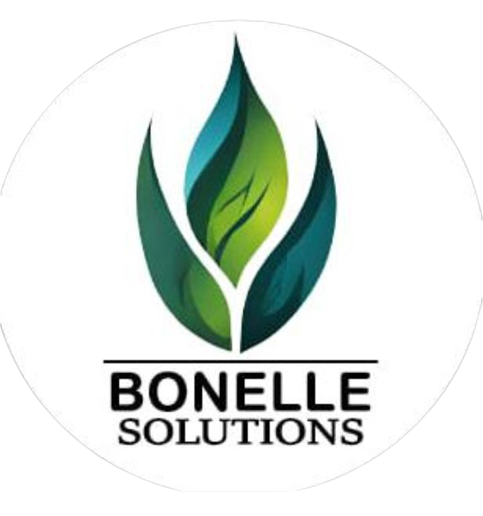Renewable Energy is important as it has the potential to provide a ready supply of power without using natural resources. There is also a lower risk of environmental problems like fuel spills and minimal issues with emissions, while also reducing the need for imported fuels. With reliable supplies and fuel diversification, renewable energy could meet our power needs for years to come.
As a rule of thumb, the effectiveness of renewable energy depends upon the resource being used. Some renewable sources are more readily available and effective than others, while some, such as geothermal are of great use in some locations and not in others due to accessibility. However, despite these challenges, renewable energy has the potential to reduce electricity sector emissions by around 80%.
Conversely, there is no ‘best type’ of renewable energy, as used widely depends on location. Iceland, for example, has ample geothermal resources, while places like the highlands of Scotland are well-suited to wind power. In other areas, solar energy is best suited while the United States has invested in hydroelectric power. Each type of renewable energy has benefits and drawbacks, often related to supply, meaning that the best solution is often to use a variety of types of resources together.
Renewable Energy looks set to be a large part of the future energy mix, along with other clean sources such as nuclear power. The drive towards a greener future for power production is promoting a rise in job creation in renewable power industries such as solar and wind. This trend looks set to continue as governments strive to reach net zero. With that in mind, let’s explore a few benefits and the most common types.
The Topmost Benefits Associated With Renewable Energy
Before we explore some of the benefits associated with renewable energy, it’s essential to consider that some factors of non-renewable energy are crucial to the environment. In this case, non-renewable energy comes from sources that will either run out or not be replenished for many thousands of years. These include fossil fuels, such as coal, and natural gases that are burned to generate electricity.
A study of nations around the world found that Germany uses the highest amount of renewable energy with 12.74%. This was followed by the UK (11.95%), Sweden (10.96%), Spain (10.17%), Italy (8.8%), Brazil (7.35%), Japan (5.3%), Turkey (5.25%), Australia (4.75%) and the USA (4.32%) all making up the top ten. Much work needs to be done to increase these usage rates to reach a completely renewable future, but this need is driving the industry forward and creating opportunities in this sector.
Renewable energy offers a range of benefits including offering a freely available source of energy generation. As the sector grows there has also been a surge in job creation to develop and install the renewable energy solutions of tomorrow. Renewable sources also offer greater energy access in developing nations and can reduce energy bills too.
Of course, one of the largest benefits of renewable energy is that much of it also counts as green and clean energy. This has created a growth in renewable energy, with wind and solar being particularly prevalent. However, these green benefits are not the sole preserve of renewable energy sources. Nuclear power is also a zero-carbon energy source since it generates or emits very low levels of CO2.
Some favor nuclear energy over resources such as solar and wind since nuclear power is a stable source that is not reliant on weather conditions. There are a range of renewable energy sources that have been developed, with each offering its advantages and challenges depending on factors such as geographical location, requirements for use, and even the time of year.
1. Solar Power
The potential for the sun to supply our electricity generation needs is huge, because the amount of energy to meet the planet’s power needs for an entire year reaches the earth from the sun in just one hour. However, the challenge has always remained in how to harness and use this vast potential. We currently use solar energy to heat buildings, warm water, and power our devices. The power is collected using solar, or photovoltaic (PV), cells made from silicon or other materials. These cells transform sunlight into electricity and can power anything from the smallest garden light to entire neighborhoods. Rooftop panels can provide power to a home, while community projects and solar farms that use mirrors to concentrate the sunlight can create much larger supplies. Solar farms can also be created in bodies of water, called ‘floatovoltaics’ these provide another option for locating solar panels. As well as being renewable, solar-powered energy systems are also clean energy sources since they don’t produce air pollutants or greenhouse gases. If the panels are responsibly sited and manufactured they can also count as green energy as they don’t have an adverse environmental impact.
2. Wind Power
Wind energy works much like old-fashioned windmills did, by using the power of the wind to turn a blade. Where the motion of these blades would once cause millstones to grind together to make flour, today’s turbines power a generator, which produces electricity. When wind turbines are sited on land they need to be placed in areas with high winds, such as hilltops or open fields and plains. Offshore wind power has been developing for decades with wind farms providing a good solution for energy generation while avoiding many of the complaints around them being unsightly or noisy on land. Of course, offshore use has its own drawbacks due to the aggressive environments the turbines need to operate in.
3. Hydroelectric Power
Hydroelectric power works in a similar manner to wind power in that it is used to spin a generator’s turbine blades to create electricity. Hydropower uses fast-moving water in rivers or from waterfalls to spin the turbine blades and is widely used in some countries. It is currently the largest renewable energy source in the United States, although wind energy is fast closing the gap. Hydroelectric dams are a renewable energy source, but these are not necessarily green energy sources. Many of the larger ‘mega-dams’ divert natural water sources, which creates a negative impact on animal and human populations due to restricted access to the water source. However, if carefully managed, smaller hydroelectric power plants (under 40 megawatts) do not have such a catastrophic effect on the local environment as they divert just a fraction of the water flow.
4. Biomass Energy
Biomass energy uses organic material from plants and animals, including crops, trees, and waste wood. This biomass is burned to create heat which powers a steam turbine and generates electricity. While biomass can be renewable if it is sustainably sourced, there are many instances where this is neither green nor clean energy. Studies have shown that biomass from forests can produce higher carbon emissions than fossil fuels, while also hurting biodiversity. Despite this, some forms of biomass do offer a low-carbon option given the correct circumstances. Sawdust and wood chippings from sawmills, for example, can be used for biomass energy where it would normally decompose and release higher levels of carbon into the atmosphere.
6. Geothermal
Geothermal energy uses the heat trapped in the Earth’s core which is created by the slow decay of radioactive particles in rocks at the centre of the planet. By drilling wells, we can bring highly heated water to the surface which can be used as a hydrothermal resource to turn turbines and create electricity. This renewable resource can be made greener by pumping the steam and hot water back into the earth, thereby lowering emissions. The availability of geothermal energy is closely tied to geographical location, with places such as Iceland having an easily reached, ready supply of geothermal resources.
7. Tidal Power
Tidal power offers a renewable power supply option since the tide is ruled by the constant gravitational pull of the moon. The power that can be generated by the tide may not be constant, but it is reliable, making this relatively new resource an attractive option for many. However, care needs to be taken concerning the environmental impact of tidal power, as tidal barrages and other dam-like structures can harm wildlife.
Some Notable Drawbacks Related To Renewable Energy
The next part brings us to some of the disadvantages of renewable energy… As mentioned above, many renewable energy sources cannot be relied upon all the time. When the sun goes down or hides behind a cloud, we cannot generate solar power and when the wind doesn’t blow, we cannot create enough wind energy. For this reason, fossil fuels are still in use to top-up renewable sources in many countries.
This variable production capacity means that large energy storage solutions are required to ensure there is enough power when renewable energy generation dips. An alternative solution is to deploy several renewable technologies, creating a more flexible system of supply that can counteract dips in production for a given source. Some renewable resources, such as hydropower and biomass, do not suffer from these problems of supply, but these both have their challenges related to environmental impact, as noted above.
In addition to this, some renewable energy sources, such as solar and wind farms, create complaints from local people who do not want to live near them. However, this is not always the case, as shown by the example of Ardrossan Wind Farm in Scotland, where most residents believe the farm enhanced the area. Furthermore, a study by the UK Government found that “projects are generally more likely to succeed if they have broad public support and the consent of local communities. This means giving communities both a say and a stake.” This theory has been proven in Germany and Denmark, where community-owned renewable projects have proven popular.
Can Renewable Energy Replace Fossil Fuels?
Contrary to many beliefs, it’s worth mentioning that Renewable Energy sources will not run out – at least not for many millions of years (in the case of the sun, for example). Usually, they provide a viable alternative to non-renewable resources, such as fossil fuels while many are also environmentally friendly and produce little of no CO2. However, the hope is that renewable energy will one day replace fossil fuels.
Remember, there is a finite amount of coal and oil on the planet, so these will eventually run out. This means that the future needs to be renewable. In addition, the environmental benefits of a clean, green, and renewable energy future are becoming increasingly obvious as global warming continues. To fully replace fossil fuels, there will be a need to continue innovating renewable energy solutions.
In addition, there is every likelihood that renewable sources will need to be used in conjunction with one another to provide a steady supply. There is a requirement for cleaner methods of production and improved power management and storage. While a renewable energy future is possible, there is still much work to be done before the world is ready to dispense with fossil fuels completely.

